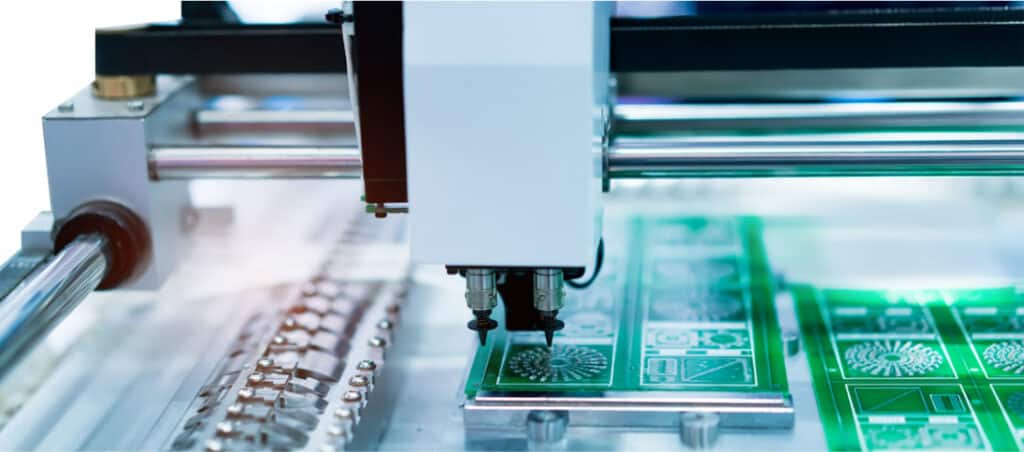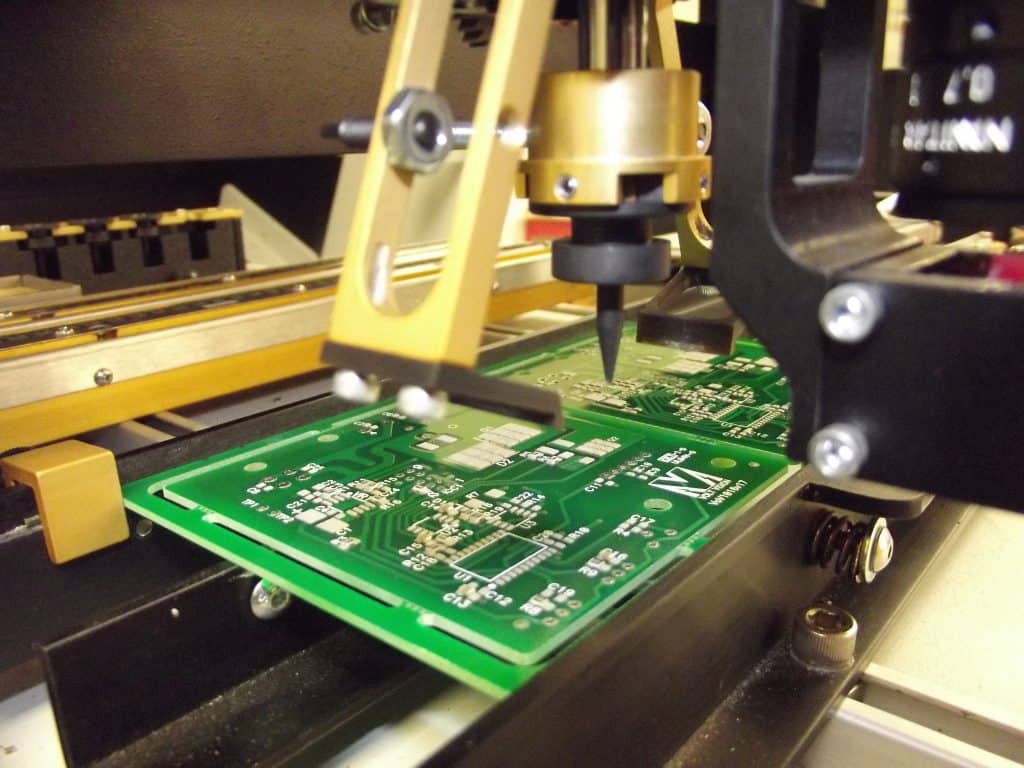Printed Circuit Board (PCB) manufacturing is a complex process that involves several stages, including design, fabrication, assembly, and testing. The cost of PCB manufacturing depends on various factors, such as the type of material used, the complexity of the design, and the volume of production. Therefore, it is essential for manufacturers to have a clear understanding of the cost drivers and the strategies to optimize them.
One of the primary cost drivers in PCB manufacturing is the material cost. The choice of material can significantly affect the cost of the PCB. For instance, using high-quality materials may increase the cost but can also enhance the performance and durability of the PCB. On the other hand, using low-quality materials may reduce the cost but can also compromise the quality and reliability of the PCB. Therefore, manufacturers need to carefully evaluate the trade-offs between cost and quality when selecting the materials for PCB manufacturing.
Another critical factor that affects the cost of PCB manufacturing is the design complexity. The more complex the design, the more time and resources are required to manufacture the PCB. Therefore, manufacturers need to optimize the design for manufacturability to reduce the cost and improve the efficiency of the process. This can be achieved by using design for manufacturing (DFM) tools and techniques that help identify and eliminate potential manufacturing issues early in the design phase.

Factors Affecting PCB Manufacturing Cost
When it comes to PCB manufacturing cost, there are several factors that can impact the final price. Understanding these factors can help you make informed decisions about your PCB design and production. Here are some of the most important factors to consider:
Design Complexity
The complexity of your PCB design can have a significant impact on the manufacturing cost. More complex designs require more time and resources to produce, which can drive up the cost. Some of the factors that can increase design complexity include:
- Multiple layers
- Fine pitch components
- High-speed signals
- High component density
- Blind/buried vias
Materials Used
The materials used in your PCB can also affect the manufacturing cost. High-quality materials tend to be more expensive, but they can also improve the performance and reliability of your PCB. Some of the materials that can impact cost include:
- Copper weight/thickness
- Laminate material
- Surface finish
- Solder mask type
Production Volume
The volume of PCBs you need to produce can also impact the cost. Larger production runs tend to be more cost-effective, as the fixed costs (such as tooling and setup) can be spread out over a larger number of units. Smaller runs may be more expensive on a per-unit basis, but they can be more cost-effective overall if you only need a small number of PCBs.
Turnaround Time
Finally, the turnaround time for your PCB production can also impact the cost. Rush orders or expedited production can be more expensive, as they require faster turnaround times and may require additional resources to complete. If you have a flexible timeline, you may be able to save money by choosing a longer turnaround time.
In conclusion, understanding the factors that impact PCB manufacturing cost can help you make informed decisions about your design and production. By considering design complexity, materials used, production volume, and turnaround time, you can ensure that you get the best possible value for your investment.
Cost Breakdown of PCB Manufacturing

When it comes to printed circuit board (PCB) manufacturing, the cost is a crucial factor to consider. The cost of PCB manufacturing depends on various factors such as design, material, labor, and overhead costs. In this section, we will discuss each of these costs in detail.
Design and Engineering Costs
Design and engineering costs refer to the expenses incurred in the design and development of the PCB. These costs include the salaries of the design and engineering team, software licenses, and other expenses related to the design process. The design and engineering costs can vary significantly depending on the complexity of the PCB design and the level of customization required.
Material Costs
Material costs refer to the expenses incurred in the procurement of materials required for PCB manufacturing. These materials include copper, fiberglass, solder mask, and other components. The material costs can vary depending on the quality, quantity, and availability of the materials.
Labor Costs
Labor costs refer to the expenses incurred in the manufacturing process, including the salaries of the assembly line workers, quality control personnel, and other staff involved in the production process. The labor costs can vary depending on the location of the manufacturing facility, the level of automation, and the skill level of the workers.
Overhead Costs
Overhead costs refer to the expenses incurred in the running of the manufacturing facility, including rent, utilities, insurance, and other administrative expenses. The overhead costs can vary depending on the location of the manufacturing facility and the size of the operation.
In conclusion, the cost of PCB manufacturing depends on various factors, including design and engineering costs, material costs, labor costs, and overhead costs. By understanding these costs, manufacturers can optimize their operations and reduce costs while maintaining high-quality standards.
Strategies for Reducing PCB Manufacturing Cost

Design Optimization
One of the most effective ways to reduce PCB manufacturing costs is to optimize the design of the board. This involves minimizing the number of layers, reducing the size of the board, and simplifying the layout. By doing so, the amount of raw material used in production is reduced, and the production process becomes more efficient.
Material Selection
Choosing the right materials can also help reduce the cost of PCB manufacturing. For example, opting for a cheaper substrate material such as FR-4 instead of more expensive materials like ceramic or Teflon can significantly reduce the cost of production. Additionally, selecting a thinner copper layer can also help cut costs, as it requires less raw material.
Production Planning
Effective production planning is essential for reducing PCB manufacturing costs. This involves optimizing the production process to minimize waste and increase efficiency. One way to achieve this is by using automated production processes, which can significantly reduce labor costs and increase production speed. Additionally, scheduling production runs during off-peak periods can help reduce energy costs.
Supplier Negotiation
Negotiating with suppliers can help reduce the cost of raw materials and other components used in PCB manufacturing. By negotiating bulk discounts and better payment terms, manufacturers can significantly reduce their overall production costs. Additionally, working with local suppliers can help reduce shipping costs and lead times.
In conclusion, by optimizing the design of the board, selecting the right materials, planning production effectively, and negotiating with suppliers, manufacturers can significantly reduce the cost of PCB manufacturing.
Conclusion

In conclusion, the cost of PCB manufacturing varies depending on several factors such as the type of material used, the size and complexity of the board, and the quantity ordered. It is important to carefully consider these factors when estimating the cost of PCB manufacturing.
Based on our research, we can conclude that the cost of PCB manufacturing has decreased over the years due to advancements in technology and increased competition in the market. However, it is still important to choose a reliable and experienced manufacturer to ensure the quality and reliability of the PCB.
When estimating the cost of PCB manufacturing, it is important to consider all the associated costs such as tooling, testing, and shipping. Additionally, it is important to factor in any potential delays or issues that may arise during the manufacturing process.
Overall, while the cost of PCB manufacturing can vary greatly, it is possible to find a reliable and cost-effective manufacturer by doing thorough research and considering all the factors involved.

